Other names "The Shark Lady" Role Ichthyologist Name Eugenie Clark | Nationality American | |
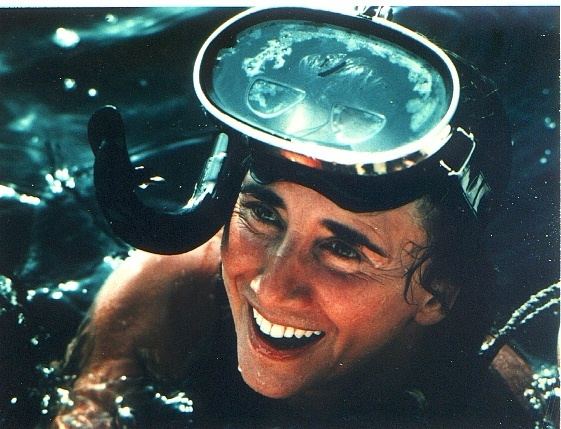 | ||
Born May 4, 1922 ( 1922-05-04 ) Children Aya Papakonstantinou, Hera Papakonstantinou Books The Lady and the Sharks, Lady with a Spear Ex-spouse Jideo Umaki, Ilias Papakonstantinou | ||
Half a Mile Down - Dr Eugenie Clark aboard IUC Pisces.mp4
Eugenie Clark (May 4, 1922 – February 25, 2015), popularly known as The Shark Lady, was an American ichthyologist known for both her research on shark behavior and her study of fish in the order Tetraodontiformes. Clark was a pioneer in the field of Scuba diving for research purposes. In addition to being regarded as an authority in marine biology, Clark was popularly recognized and used her fame to promote marine conservation.
Contents
- Half a Mile Down Dr Eugenie Clark aboard IUC Piscesmp4
- Dr eugenie clark
- Early life and education
- Academic and scientific life
- Work at Cape Haze
- Legacy
- Awards and honors
- References

Dr eugenie clark
Early life and education
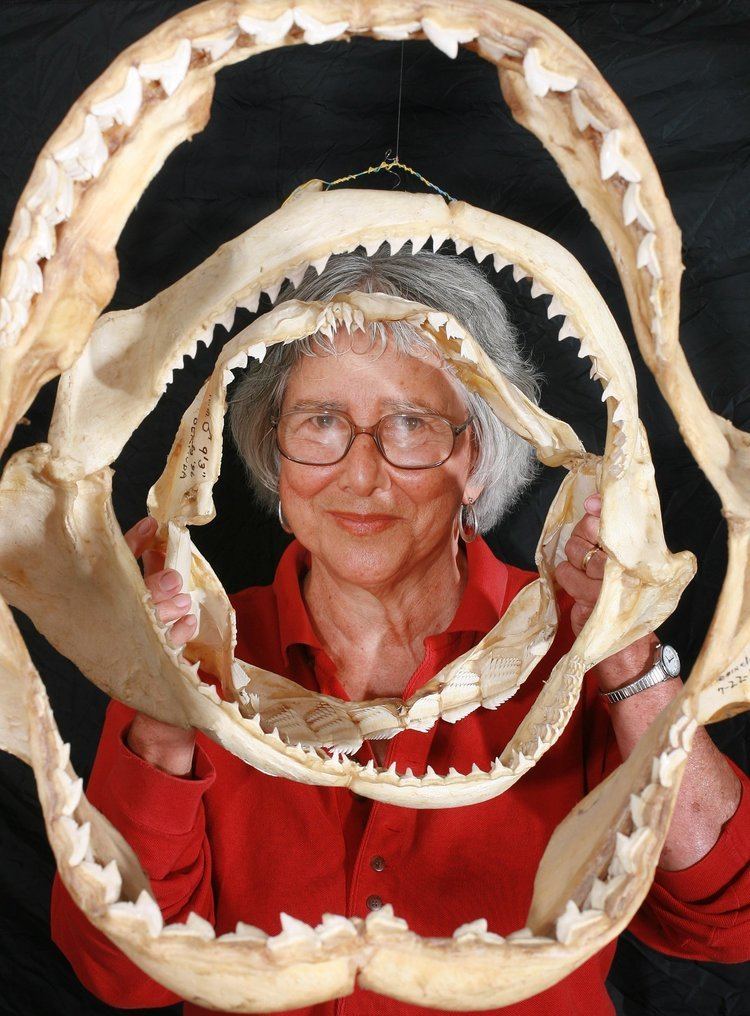
Eugenie Clark was born and raised in New York City. Her father, Charles Clark, died when Eugenie was almost two years old, and her mother, Yumico Motomi, later married Japanese restaurant owner Masatomo Nobu.
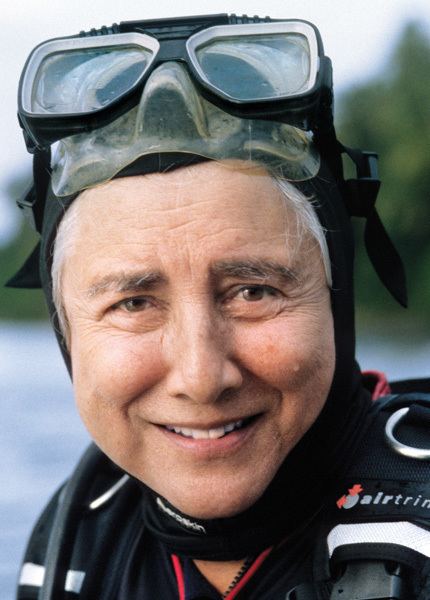
Clark attended grade school in Woodside, Long Island, and graduated from Bryant High School in Queens, New York. She was the only student of Japanese descent in her schools.
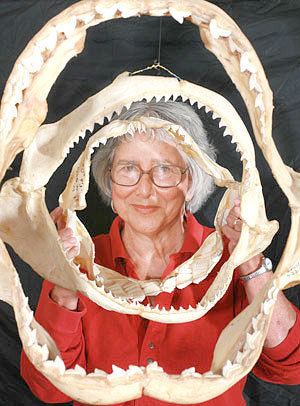
From an early age, Clark was passionate about marine science, with many of her school reports covering topics in marine biology. An initial visit to the New York Aquarium at Battery Park inspired Clark to return to the aquarium every Saturday thereafter, fascinated by marine animals. The work of naturalist William Beebe further inspired Clark to become an oceanographer.
Academic and scientific life

Eugenie Clark received a Bachelor of Arts in zoology from Hunter College (1942). During summers, she studied at the University of Michigan Biological Station, and prior to graduate school she worked for Celanese Corporation as a chemist. Eugenie initially sought to attend graduate school at Colombia University, but her application was rejected out of fear that she would eventually choose to leave her scientific career in order to focus on raising children. Undaunted, Clark went on to earn both a Master of Arts (1946) and Doctorate of Philosophy (1950) from New York University. During her years of graduate study, Clark carried out research at the Scripps Institutution of Oceanography in La Jolla, the American Museum of Natural History in New York, the Woods Hole Marine Biological Laboratory in Massachusetts, and at the Lerner Marine Laboratory in Bimini.
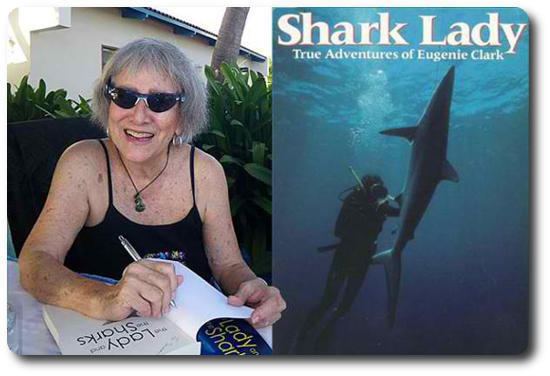
In 1949, under a Office of Naval Research program to undertake scientific research in Micronesia, Clark carried out fish population studies in Guam, the Marshall Islands, the Palau islands, the Northern Mariana Islands, and the Caroline Islands. After completing doctoral research, Clark received a Fulbright Scholarship to pursue ichthyological studies at the Marine Biological Station in Hurghada, on the northern Red Sea Coast of Egypt. These experiences were discussed in Clark’s first book, Lady with a Spear (1953), the writing of which was supported in part by a Eugenie Saxton Memorial Fellowship and a Breadloaf Writers' Fellowship. The book was a popular success.

Anne and William H. Vanderbilt, fans of Lady with a Spear who owned an estate in southwestern Florida, invited the biologist to speak at a public school in Englewood, Florida, in 1954. After Clark delivered a presentation on Red Sea fishes, the attendees shared that they encountered many similar animals in the local waters and were interested in learning more about them. Following this visit, the Vanderbilts built a lab for Clark in the area. This laboratory was christened the Cape Haze Marine Laboratory in 1955.
Work at Cape Haze
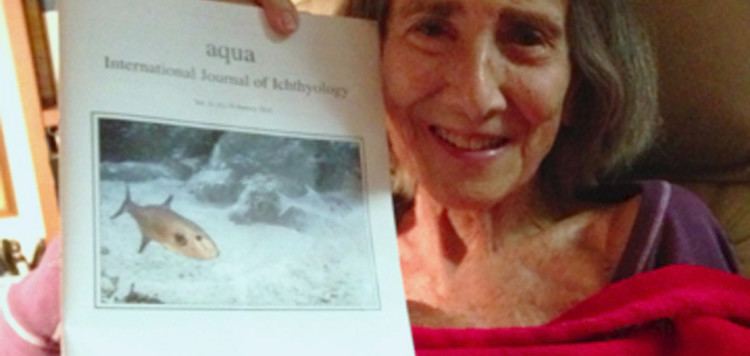
At the Cape Haze Marine Laboratory, Clark worked with a local fisherman named Beryl Chadwick, who was experienced in catching sharks. Chadwick was Clark's only assistant at the time of the lab's founding. The lab’s first request for shark research came from John H. Hellen, director of the New England Institute for Medical Research. As the laboratory’s activities began to be published in scientific journals, requests from other researchers began to pour into the lab. Researchers from around the world came to study in Cape Haze.
One of the visiting researchers at Cape Haze Laboratory was Sylvia Earle, who was then working on her dissertation research on algae at Duke University. Earle assisted Clark in creating a herbarium by depositing duplicate specimens into the laboratory’s reference collection.
While at Cape Haze, Clark conducted a number of behavioral, reproductive, and anatomical experiments on sharks and other fish. She frequently scuba dove in the local waters, studying various organisms. On these dives, Clark often utilized the glass jar catching technique popularized by Connie Limbaugh, then the Chief Diver at Scripps Institution of Oceanography. These jars allowed Clark to transport unknown specimens back to the lab for further study.
The Cape Haze Laboratory moved to Siesta Key, Florida, in 1960. Scientists continued to visit the laboratory, including chemists from the Dow Chemical Company.
In 1962, Clark participated in Israel South Red Sea Expedition, which set up a camp on one of the Eritrean islands of the Dahlak Archipelago. Her studies focused not only on sharks, but also on other, mainly large pelagic species.
In 1966, Clark left Cape Haze for a faculty position at the City University of New York. In 1968, she became an instructor at the University of Maryland, College Park. While at the University of Maryland, Clark received many accolades, including three fellowships, five scholarships, and six medals. Clark officially retired from the University of Maryland in 1999, but taught one class in the zoology department each semester for several years. Over the course of her academic career, Clark taught thousands of students.
Clark returned to the Cape Haze Laboratory, now renamed the Mote Marine Laboratory, in 2000. She worked there as Senior Scientist, Director Emerita, and Trustee until her death in Sarasota, Florida, of lung cancer on February 25, 2015. Clark was an active researcher and diver throughout her entire life, conducting her last dive in 2014 and publishing its results in January 2015, with additional research still undergoing review at the time of her death.
Legacy
Clark was considered an international scientific authority, especially on sharks and tropical fishes. Over the course of her career, she authored two books, Lady with a Spear (1953) and The Lady and the Sharks (1969), as well as over 175 scientific articles. Clark was an avid supporter of marine conservation and many of her popular publications and public appearances focused on dispelling assumptions about shark behavior and intelligence in an effort to prevent the killing of sharks and encourage the preservation of marine environments. Publications from within this body of work document that she was the first person to train sharks to press targets, as well as the first scientist to develop “test tube” babies in female fish. She also discovered that the Moses sole produces a natural shark repellent, which has since been employed by researchers aiming to prevent harmful interactions between sharks and humans. Clark’s observation of numerous “sleeping” sharks during her research dives helped to prove sharks do not need to move in order to breathe. Over her decades of research, Clark conducted over 70 submersible dives and led more than 200 field research expeditions around the world. She worked on twenty-four television specials and helped create the first IMAX film.
Awards and honors
Clark received three honorary D.Sc. degrees from the University of Massachusetts, Long Island University, and the University of Guelph. She has been inducted into both the Florida Women's Hall of Fame and the Maryland Women's Hall of Fame. She was the 1987 recipient in the Science category of a NOGI, which is awarded annually by the Academy of Underwater Arts and Sciences and is the oldest, and considered to be the most prestigious award in the diving world. Clark has also received accolades from the National Geographic Society, the Explorers Club, the Underwater Society of America, the American Littoral Society, the Women Divers Hall of Fame, and the American Society of Oceanographers. A full list of her awards, medals, and publications can be viewed as part of her biography on the Mote Marine Laboratory website.She also has been written about in many books, such as "The Shark Lady", by Ann Mcgovern.
Several species of fish have been named in her honor: Callogobius clarki (Goren), Sticharium clarkae (George and Springer), Enneapterygius clarkae (Holleman), and Atrobucca geniae (Ben-Tuvia and Trewavas).
